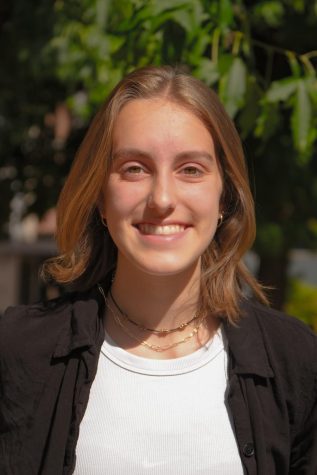Weekend Wednesday or a Valuable Learning Tool?
New PAT proposal for Wednesday flex-day could change the way school works forever.
December 15, 2021
The transition from online to in-person school has been a difficult one. For both students and teachers, issues surrounding mental health and productivity have been called into question. According to the Portland Association of Teachers (PAT), over 80% of teachers feel that their workload and stress levels are higher than ever before, and more than 2,000 requests for substitutes were left unfilled.
The PAT proposal seeks to provide an end to these issues. By creating a Wednesday where students can come to school or stay home for asynchronous work, PAT hopes to give both teachers and students work-time, hopefully reducing stress and even providing “social, emotional, and behavioral supports” during this time.
The day would be blocked into two sections—the first three hours would be time for students to receive help from science, math, and health teachers, while the next three hours would be for students to receive help from English, social studies, and AP teachers. The three hours when teachers are not directly helping students would be time for planning.
“My students don’t have enough time to come in and do retakes; or if they miss a lab, it’s really hard to try to make that up with the way it is,” said Emily O’Loughlin, a chemistry teacher at Ida B. Wells. “Having an all-day in-person flex day once a week would be really nice.”
Other teachers seem to agree. “I think a lot of my students, as AP students, take on a lot, so I think having time where they’re not getting new work would benefit the ones who took it seriously,” said Tim Loveless, IBW AP Government and AP Psychology teacher.
However, when faced with the idea of a flex day, teachers and parents wonder if students will use that time effectively. Dubious teachers cite “Asynchronous” Wednesdays from the previous online school year, where time was rarely spent effectively. Instead of getting help, students often opted out of work time opportunities.
“I think there is a fear that if teenagers are given freedom, they’re going to abuse it, but I think we also have pretty ample evidence that students do care about learning and assuming that they don’t is not really the best way to go about it,” said Thor Esbenson, a math teacher at IBW.
While he is supportive of the proposal, PAT representative and IBW Forensic Science teacher Scott Guthrie acknowledges that students may not make the right choices. “Hopefully the students who need to use the time wisely will,” he said. “Very few students would choose to stay and do one-on-one work or catch up, but they can be helped to make that choice.” He believes that support systems like teachers, parents, and even other peers could help.
Some teachers are concerned about the way students will use their time. O’Loughlin has heard from teachers who are feeling this way. “I do understand where other teachers are coming from, that it feels like less class time,” she said. With the proposed Wednesday schedule, the school-week would be shorter, although the PAT proposal claims to meet the required number of instructional hours.
Despite the overwhelming support from students and teachers, Guthrie doesn’t think this proposal will be accepted. “Just watching the negotiations over it, it looks very bleak,” he said. “I would love to see it happen because I probably have about 20 students who could benefit from it out of 170 or so. But then there’s the other 150 who don’t need it, at least as far as I know.”
However, input could still be key in helping this proposal be passed. “If they wanted to push for it, they could. At the district level, parents are listened to more than teachers and certain parents are listened to more than other parents,” he said.
If anything could get the proposal passed, it would be widespread parent support, but the negotiation between teachers, parents, and school officials leaves out one key voice: the students.
“I would like to see all three parties involved and it seems like all the adults are making a lot of decisions without talking to the students. I would like to see the students involved in the negotiations,” Esbenson said. “I think it would be good if there were all parties at the table.”
Not all parties feel the same about this issue. “From my student perspective, it feels like I’m getting basically cheated out of learning,” said Brinnan Smith, a junior at IBW. He described his struggle between wanting to give teachers planning time while still wanting time in class.
“We’re just losing more and more time and I’m concerned for the future of students,” he said. With students in states such as California having 1,080 required hours of schooling, Smith is worried about falling behind. With the proposed Wednesday flex day, PPS would meet the required instructional time, but that amount of required time? Only 990 hours.
“I feel like if we’re going to go back to one asynchronous day every week, that’s only regressing,” Smith said. “That’s only going to make things worse in the long run, because people are going to start to get used to four days a week.”
Wednesday flex-days could be the solution to all our problems, or they could disrupt the routine we have worked so hard to rebuild. Regardless, students and teachers alike are facing serious challenges that are being demanded to be solved in one way or another. PAT is planning to meet with the distinct again on December 16th and 17th, where a conclusion will ultimately be reached.



